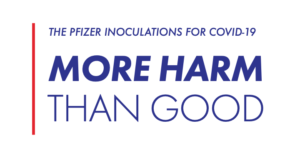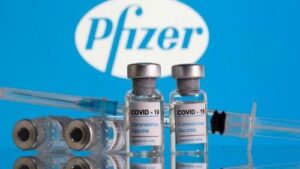We learn from this history that if FDA fails to achieve an illegal and unconstitutional objective through one set of means, it will do so through another. It is relentless.
In 2004, FDA banned all ephedrine alkaloid containing dietary supplements. It did so despite an absence of any sound scientific evidence that ephedrine alkaloids at low dose levels presented a risk of illness or injury. It did so in flagrant violation of the plain and intended meaning of the dietary supplement adulteration provision. In that provision, Congress did not authorize FDA to compare risk of illness at any dose level against potential benefit to determine the existence of dietary supplement adulteration. It expected FDA to follow existing food adulteration precedent, making FDA bear the burden of proving a dietary ingredient (and not a hypothetical drug substitute) would present a risk of illness or injury at the dose levels recommended in labeling (and not at hypothetical dose levels). The FDA’s ban was held a violation of the DSHEA’s dietary supplement adulteration provision by the U.S. District Court for the District of Utah. Despite that decision, FDA enforced the illegal ban in contumacious disregard of the court’s order all across the United States for an entire year. On appeal, the FDA just won a reversal of the district court’s decision. That decision is itself on appeal. As with the health claims provision, so too with the adulteration provision, FDA has effectively rewritten the law in violation of the will of Congress to achieve its desired ends.
Although Congress plainly intended the DSHEA third party literature exemption to prohibit FDA from banning dietary supplement companies from distributing scientific articles containing nutrient-disease information, FDA has flouted the will of Congress and enforced the ban in derogation of the law. According to FDA, while a publication may be exempt from labeling under DSHEA, it may still prosecute the party that distributes the publication based on an intended use theory. The nutrient-disease content of the publication is said to be evidence that the nutrient is intended for use in the cure, treatment, mitigation, or prevention of disease, making the nutrient a drug. Thus, FDA has defeated the very purpose and meaning of the third party literature exemption as well.
The FDA has fulfilled the founding fathers’ dire prediction of what would become of an agency of the government delegated by Congress legislative power. The FDA has become tyrannical. It is a law unto itself. It is unaccountable to the Congress. It is unaccountable to the courts. It is unaccountable to the American people. It is corrupt. It is the handmaiden of the pharmaceutical industry. Its decisions have sacrificed tens of thousands of Americans lives. It has gotten away with that history of homocide. What then do we need to do to end the law violations and to return this government to its constitutional moorings?
I recommend two interim and two long-term steps.
First, so long as FDA exercises control over drug approvals, its decision makers should be held personally liable for decisions that result in the infliction of disability and death.
- The Tort Claims Act should be amended to permit wrongful death and gross negligence actions to be filed against FDA management personally whenever someone suffers permanent disability or death as a result of a decision by FDA management to overrule recommendations against drug approval made by FDA scientific reviewers.
- Drug review panels should be chosen by a statutorily created, independent advisory body, not by FDA. Members should be screened to exclude those who have conflicts of interest, including ties to the pharmaceutical industry or to the FDA. The members should be paid for their services not by FDA but by the United States Treasury directly.
The FDA should have no authority to recommend panel members or to influence advisory panel meetings or modify advisory panel recommendations. All questions posed to the advisory panel should be submitted by FDA to the Department of Justice and modified by Justice as needed to ensure that none reveals a bias in favor of drug approval. FDA should be prohibited from acting contrary to a panel recommendation if that recommendation is against drug approval and if any FDA safety officers have also recommended against drug approval.
Long-term, Congress should end FDA censorship of nutrient-disease treatment claims by passing the Health Freedom Protection Act, H.R. 4282. In addition, Congress should amend the FDCA to remove from FDA the power to evaluate and approve new drugs. Instead, by statute, criteria should be established for drug evaluation to be conducted by government funded academic teams at universities qualified to do so who have no financial ties either to the pharmaceutical industry or to the FDA. Drug applications should be blinded so that reviewers are unaware of the company sponsor. The recommendations of these independent reviewers should be deemed final determinations, and the FDA should be required by law to follow those determinations.
Jonathan W. Emord. All rights reserved. Reproduction in whole or part without the express written consent of the author is strictly prohibited. Delivered September 23, 2006 at the Health Freedom Expo in Richmond, Virginia. (source)
FDA Censorship
Emord is a familiar name to those of us in the Health Freedom Movement who believe vitamins and other dietary supplements should not only be readily available, but should also include on their labels and promotional material detailed information about why they are good for us. It may surprise you, but it is illegal for vitamin manufacturers to include truthful information, backed by science, on the label or in the labeling or advertising for a product. The FDA has systematically refused to allow this information to be available to the public. The penalty for providing the information includes removal of the product from the market, prosecution and possible jail time. Every American should be alarmed at this FDA censorship.
This same ban on useful information includes a ban on information about all kinds of dietary supplement products that have scientific as well as longstanding clinical and published public record evidence to back up the fact that they can prevent us from succumbing to swine flu. Or, at the very least, these products could make our bout with the infection a mild one. In light of the major risks of vaccines, especially the largely untested swine flu vaccine we are now facing, the fact that these other dietary supplement choices are basically free of any side effects, makes this banning of information even more outrageous.
Since dietary supplements are regulated as foods, because that’s what they are, the prospect of seeing a product as harmless as prunes removed from the market over a labeling dispute is an example of how ridiculous this problem is. If some company that sells prunes puts a label claim on the package that says eating them will cure constipation, that would be classified as a claim for an unapproved drug by FDA standards. A substance is defined as a drug based on its intended use, not its physiological effect on the body. Consequently, any substance that it is intended to be used to “diagnose, cure, mitigate, treat, or prevent disease in man or other animals” is a drug.
Not being allowed to tell the public what dietary supplements can do to actually cure or prevent disease, is, in Emord’s legal arguments, unconstitutional and in conflict with the principle of free speech, which is protected under the First Amendment.
The FDA also has an agenda to suppress any actual cures for cancer, believe it or not. As crazy as it might sound to some, the point of the cancer industry is not really to cure cancer — it is to keep raising money for the alleged, and never-ending, “search for the cure.” A couple of documentaries below will shed light on the true agenda of the FDA regarding the cancer ‘business.’ (source)
Jonathan Emord’s latest book, The Rise of Tyranny – How Federal Agencies Abuse Power and Pose Risks to Your Life and Liberty is an important book because it explains, blow by blow, how an array of 184 federal agencies were unconstitutionally created and how their creation shoved aside the constitutionally- defined principle of “balance of power” which was the genius of how our government originally worked.
Another revelation in Rise of Tyranny is the concept of “rent seeking”. Rent seeking is an economic term to describe when an individual, corporation or other entity seeks to gain income, not from honest competition, but from orchestrating burdensome regulations or other government decisions to restrain competition. In other words, industries “capture” the very agencies set up to regulate them.
When the relationship is fully operational, the industry itself provides the regulatory language for rulemaking designed to suppress if not totally destroy unwanted competition. The carrot offered the bureaucrat is a lucrative job in the industry after the bureaucrat leaves the agency or other benefits. Protecting and serving the public is not part of the equation.
The nonsensical excuses the FDA, in particular, uses to justify convoluted logic regarding its various rulings, is a demonstration of just how far that agency will go to help its “client.” Yes, FDA officials refer to the pharmaceutical industry as FDA’s “client”. Emord provides extensive details on how the pharmaceutical industry has gained control of not just the FDA but also medical schools, medical research, prescription decisions by doctors, as well as actions by members of Congress and even the President.
 As the FDA and other agencies protect the financial interests of the pharmaceutical industry, what we have seen for decades are gunpoint raids in doctors’ offices for nothing more than disputes over use of vitamins in patient care, banning and burning of books and scientific material discussing how to treat scary diseases such as cancer, and jailing people with ideas that challenge the status quo of the current government-endorsed medical system.
As the FDA and other agencies protect the financial interests of the pharmaceutical industry, what we have seen for decades are gunpoint raids in doctors’ offices for nothing more than disputes over use of vitamins in patient care, banning and burning of books and scientific material discussing how to treat scary diseases such as cancer, and jailing people with ideas that challenge the status quo of the current government-endorsed medical system.
An astonishing description of the problem provided in the book pretty well covers the situation:
The Commissioner of FDA can promulgate any rule, can overrule any judgment of agency medical reviewers, can order the prosecution of any regulatee, and can approve for marketing any drug, regardless of the scientific evidence that may exist against the drug’s safety or efficacy.
The Congress of the United States has vested in one person the enormous power to regulate everything we consume and use for our sustenance and health—all food, drugs, cosmetics, biologics, medical devices, and dietary supplements. There is little real check on the exercise of the FDA Commissioner’s discretion, not from the Courts, not from the Congress, and not from the President. The union of legislative and executive powers within FDA has yielded corruption, as the founders predicted, in the form of industry favoritism.
One first class example of this wielding of arbitrary power happened this past July (2016) regarding the final ruling on the safety of dental mercury fillings.
For people who suffer an array of illness from mercury poisoning from these fillings, it has been a long, uphill battle (Federal lawsuits, two FDA hearings and several Congressional hearings) in an attempt to force the FDA to either ban these dangerous fillings outright or post strong warnings for their limited use. For several years, the FDA’s website had posted a message regarding the possible risks to children and unborn children of pregnant women for neurological damage so the final, court-ordered ruling was expected to clarify and amplify what the agency had already posted.
Much to the horror of dental mercury poisoning victims, when forced by the Federal Court to publish a final ruling, the FDA removed the cautionary information from its website and posted its final ruling that basically blessed mercury fillings as safe and that only those who have an “allergy” to mercury need worry.
“Allergy” isn’t the word I would use unless it means getting ghastly and chronically ill from a highly-toxic substance that, by law, is taken to special toxic dumpsites when it is removed from people’s teeth. For a complete rundown of what dental mercury poisoning victims suffer, check out the article Carolyn Dean, MD ND, and I wrote about called Lies Your Dentist is Forced to Tell You available here:
While a crushing blow to the anti-amalgam movement, the implications of this outrageous ruling are way more far reaching than just to victims of the dental industry.
The FDA is also stonewalling the dangers of mercury contained in vaccinations. The Autism catastrophe is yet another cesspool of deceit committed by several government agencies. For more information on this issue, read Carolyn’s and my article called Autism Can Be Treated that we wrote 10 years ago. The figures may be out of date but you can see how long this autism scandal has been going on.
With a million and a half kids suffering from Autism, not to mention an array of other neurological disorders in epidemic proportions, the potential to deliver even more misery with the swine flu shot is enormous. The removal of mercury from compulsory childhood vaccines was a result of public pressure based on concerns over vaccine safety. Now these same parents with fragile children are facing yet another government edict forcing an even greater risk of damage if the swine flu vaccine should become mandatory. Flu shots are still loaded with mercury. Any rational person concerned with public health would be asking the question, “How many new cases of Autism and other neurological damage are there going to be, if children and people of all ages are mandated to take it?”
Jonathan Emord’s explanation that the Commissioner of the FDA rules the agency as a tyrant and without regard to its own scientists’ input rings true here.
At the last FDA hearing on the safety of mercury fillings, even the FDA-paid scientific advisory panel could not vote to support mercury filling safety. So, in the grand tradition of protecting the drug industry, to get around this unfortunate roadblock, a new FDA commissioner was appointed who had served for many years as a $250,000-a-year board member of a large amalgam manufacturing company. As this predictable drama played out, the new Commissioner waited until the last minute to pretend to recuse herself just before the final ruling was issued, so the final ruling could be announced by her underling who is now taking the heat from thousands of outraged mercury filling victims.
Fortunately, the final chapter of Emord’s book is titled, The Way Back to Liberty.
In it, he proposes eight remedies to restore the Constitution to its rightful place in defense of the rule of law our Founding Fathers created. The question is do we have the courage to stand up to perhaps the mightiest industry on earth, the pharmaceutical industry, as our Founding Fathers stood up to the power of government-protected monopolies like the tea-trading East India Company? Or, are we content to be turned back into subjects of a global empire ruling us from afar?
Now that President Trump has thrown down the gauntlet,
I believe it will take ALL of us to unhook the power of the pharmaceutical industry over our lives. I hope you will consider contacting President Trump directly to tell him you support his efforts to clean out both the CDC and the FDA. Tell him you want him to make sure Big Pharma no longer runs our government by controlling all federal health agencies from the cloakroom.
I wonder, now with social media and this easy link to contact President Trump, how many emails we can send him so he can clean up the FDA swamp. https://www.usa.gov/elected-officials/
And, while you are at it, I suggest you contact the National Vaccine Information Center to see if your state is one of 30 with bills that may eliminate vaccine exemptions for religious or personal belief reasons. (Source)
The latest FDA critique comes from three high-powered experts affiliated with Harvard Medical School—who air their appraisal in the prestigious Journal of the American Medical Association (JAMA). With combined degrees in medicine, law, business and public health, the trio examines trends at the FDA since 1983, reviewing evolving regulatory standards and drug approval processes over a nearly four-decade period. The review reveals a troubling shift toward FDA use of “less data” to approve drugs and biologics—alongside an escalating reliance on pharmaceutical industry payments to cover the salaries of the very FDA reviewers issuing the approvals.
Ordinarily, drug companies must complete three phases of clinical trials on new drugs or biologics (including vaccines) before the companies can submit an application to the FDA for approval. However, both companies and patients have often pushed for a faster FDA turnaround—“seen as a means of getting drugs to patients more quickly as well as allowing pharmaceutical companies to realize sales revenues sooner.”
As outlined by the Harvard authors, five “special programs” introduced from 1992 on allow pharmaceutical companies to dispense with some of the customary requirements (such as phase 3 clinical trials) under some circumstances. The five programs—ushered in through legislation such as the 1992 Prescription Drug User Fee Act (PDUFA) and the 2012 Food and Drug Administration Safety and Innovation Act (FDASIA)—include the Orphan Drug Act (1983); the Fast Track program (1987); Accelerated Approval (1992); Priority Review (1992); and Breakthrough Therapy (2012). All five seek to speed up drug development and “reduce evidentiary requirements” for drug approval.
These legislative and regulatory initiatives have “substantially changed drug approval at the FDA,” according to the Harvard authors, who report that in 2018, four out of five drugs (81%) benefited from one or more forms of expedited approval. As one example, the proportion of drugs approved via the 1983 Orphan Drug Act (ODA) more than doubled, going from 18% in the decade after the Act’s passage (1984-1995) to 41% (2008-2018). The original premise underlying the ODA’s passage was that a pharmaceutical company developing an “orphan drug” (a drug for a rare disease) might—in the FDA’s words—“reasonably expect the drug to generate relatively small sales in comparison to the cost of developing the drug and consequently to incur a financial loss.”
However, a 2017 analysis reported that orphan drug status now confers significant market advantages: “Due to lower [research and development] costs . . . , expedited regulatory reviews, and minimal competition . . . , rare-disease-targeting orphan drugs are now amongst the most expensive and profitable drugs on the market in the world.” Up until 2010, children’s hospitals could obtain orphan drugs at a congressionally mandated discounted rate (30% to 50%), but after the Affordable Care Act eliminated the discounts, hospital officials began complaining about a jeopardized “ability to care for some of the sickest children with the most complex health care needs.”
Another outcome of the changing regulatory environment, conclude the JAMA authors, is that the FDA increasingly issues its approvals on the basis of “less data.” Eighty-one percent of new approvals in the mid-1990s (1995-1997)—versus only about half (53%) of new approvals in 2015-2017—benefited from at least two “pivotal” clinical trials. As “regulatory standards and approval come to rely on less substantial evidence,” say the authors, “the benefits of earlier access [to drugs] must be weighed against the possibility that patients will be exposed to drugs with benefit-risk profiles that may turn out to be less favorable than expected or for which clinical benefit is never confirmed.”
The FDA also increasingly allows drug companies to substitute surrogate measures for clinically meaningful endpoints in clinical trials, a replacement enabled by the 1992 Accelerated Approval program. (A “surrogate” measure or marker is a lab measurement or physical sign expected—but not proven—to predict the effect of the drug or biologic.) Nearly three out of five pivotal efficacy trials (59%) for new drug approvals relied on surrogate measures in the most recent time period (2015-2017), versus 44% in 2005-2012. In 2004—a dozen years after surrogate measures came into widespread use—an FDA official admitted that no surrogate markers had ever been validated (“that is, shown to predict the effect of the treatment on the clinical outcome of interest”), adding that “there are a number of difficulties in interpreting trials that use surrogate markers as primary measures of drug effect.” As the JAMA authors put it, “a surrogate measure that does not predict actual patient benefit may accelerate approval of a drug that presents risk but could be of little clinical use.”
User fees = conflicts of interest
The PDUFA legislation passed in 1992 gave pharmaceutical companies the green light to make payments to the FDA (called “user fees”) in exchange for expedited approval of drugs and biologics. For the FDA, user fees have turned out to be the gift that keeps on giving. In 2018 alone, according to the Harvard trio, user fees covered “80% of the salaries of review personnel responsible for the approval of new drugs.” From 2013-2017, user fees amounted to $4.1 billion, up from $330 million over the period from 1993-1997 (an 1142% increase). By way of comparison, the user fee amount that flowed in from industry from 2013-2017 (five years) is roughly the same as the total compensation ($4.2 billion) slowly and begrudgingly awarded by the taxpayer-funded National Vaccine Injury Compensation Program since 1988 (32 years).
In an editorial accompanying the JAMA review, a former FDA Principal Deputy Commissioner wrote that “The overall picture is not of a struggling FDA, but rather of a regulatory process that has evolved over time into a thicket of special programs, flexible review criteria, and generous incentives.” Others who commented on the JAMA findings alluded to the potential for user fees to introduce conflicts of interest into the FDA’s regulatory process—but stopped short of issuing any accusations. Dr. Steven Joffe of the University of Pennsylvania stated:
There is certainly a potential for conflict in the [FDA’s] decision-making between the interests of the regulated industry and the interests of the public’s health, and so it would be better if the bulk of the agency’s budget came from the public—i.e., taxpayers—whose interests it is charged with protecting. However, I do not mean to imply that the agency’s decision-making has in fact been compromised by this arrangement.
Dr. Sidney Wolfe, director of Public Citizen’s Health Research Group, was more blunt when interviewed by PBS’s Frontline about the pharmaceutical industry’s “inroads into the FDA.” Dr. Wolfe noted that when drug companies started “paying cash right up front, for FDA review,” the FDA “started looking upon the industry as their client, instead of the public and the public health, which should be the client.” Referring, in addition, to the FDA’s aversion to controversy—and an appalling lack of congressional oversight—Wolfe suggested that the FDA’s watchwords have become: “Please the industry. Avoid conflict. Look upon our role as getting out as many drugs as possible.”
In 2000, Wolfe commented on the withdrawal from the market of drugs that had received expedited FDA review—including widely used allergy and diabetes drugs—stating that “[the] fast track [process] is being abused.” In 2016, the author of an article in the Journal of Pharmacology & Pharmacotherapeutics agreed that there is a firm basis for this conclusion, pointing to the fact that 57% of “fast-track molecules received a black box warning” from 2011-2015 and furnishing a lengthy table of significant adverse event alerts issued for products with fast-track designations.
Implications for children and adolescents
From 1998 to 2018, states the JAMA review, the FDA approved 42 new vaccines, which fall under the even less stringent category of biologics. A number of these vaccines received expedited approval, including Merck’s disastrous Gardasil vaccine—fast-tracked in six months in 2006. In 2014, the FDA granted a Breakthrough Therapy designation and then quickly approved Pfizer’s meningococcal group B (MenB) vaccine, a vaccine now widely administered to college students despite “limited quantifiable safety data.” In the context of hype about potential pandemics, vaccine scientists continue to push for more fast-track approvals. Others argue that biologics need longer review times, speculating that “[e]xpedited approval may cure an autoimmune disorder and incite another one.”
As the most vaccinated generation of American children ever has developed historically unprecedented levels of chronic illness, the FDA continues to bestow its regulatory largesse on drugs designed to profitably manage these chronic conditions, including drugs for vaccine-linked conditions such as atopic dermatitis and asthma. In 2018, for example, the FDA granted a Breakthrough Therapy designation to the Genentech and Novartis biologic omalizumab (marketed as Xolair)—already approved for young people ages 12 and up for severe asthma (2003) and chronic hives (2014)—to extend the drug’s indications to life-threatening food allergies. This, despite prior safety review warnings that prompted the FDA, in 2014, to approve label changes to describe Xolair’s “slightly higher risk of heart and brain adverse events.” The FDA also noted at that time that it could not rule out a potential risk of cancer. In 2016, Genentech paid user fees to the FDA when it submitted a request to extend Xolair’s target population to 6- to 11-year-olds.
Putting the public last
The fact that the public’s health seems to occupy last place on the FDA’s priority list is, in some respects, unsurprising, particularly to those who have followed the agency’s behavior with regard to vaccine approvals and regulation (see list of further reading below). Other recent reports paint an equally unflattering picture of the FDA and its dereliction of duty. For example, a 2015 discussion in Slate described the agency’s shocking “pattern of burying the details of [scientific] misconduct” and mused, “For an agency devoted to protecting the public from bogus medical science, the FDA seems to be spending an awful lot of effort protecting the perpetrators of bogus science from the public.” Reuters was no less scathing when it published a special report in December 2019 about the FDA’s half-century-long efforts to minimize the dangers of asbestos in talc-based baby powders and cosmetics; Reuters concluded, “Again and again since at least the 1970s, the agency has downplayed the risk of asbestos contamination and declined to issue warnings or impose safety standards.”
In 2018, The New Republic shed light on another aspect of the FDA’s and U.S. government’s close relationship with the pharmaceutical industry, pointing to the government’s central role in drug development and the boondoggle that this represents for taxpayers. According to TNR:
Of the 210 medicines approved for market by the FDA between 2010 and 2016, every one originated in research conducted in government laboratories or in university labs funded in large part by the National Institutes of Health [emphasis added]. Since 1938, the government has spent more than $1 trillion on biomedical research, and at least since the 1980s, a growing proportion of the primary beneficiaries have been industry executives and major shareholders. Between 2006 and 2015, these two groups received 99 percent of the profits, totaling more than $500 billion, generated by 18 of the largest drug companies. This is not a “business” functioning in some imaginary free market. It’s a system built by and for Wall Street, resting on a foundation of $33 billion in annual taxpayer-funded research.
A 2020 letter in JAMA Internal Medicine calls attention to the fact that when the FDA allows drugs or medical products to proceed to market without thorough premarketing clinical studies, postmarketing studies become “the principal way [that] adverse events and risks become apparent.” Yet here, too, the FDA is falling short, they state, with a high rate of misclassification of adverse events, including deaths. The letter-writers also refer to recent news reports “that the FDA allowed [medical] device manufacturers to file reports of malfunctions in a hidden database.” What is the result of this type of nontransparent behavior? At a minimum, the JAMA Internal Medicine writers warn, public and physician perceptions of safety will be “inaccurate”—increasing the odds of adverse events befalling an unsuspecting public.
For further reading on the FDA’s dereliction of duty related to vaccines, see the following Children’s Health Defense articles:
- May 29, 2019: Rubber Stamping—The FDA and Vaccines
- February 11, 2019: FDA Admits That Government Is Recommending Untested, Unlicensed Vaccines for Pregnant Women
- April 9, 2018: Overview: FDA Is Still “Asleep at the Switch”
- April 9, 2018: FDA Acknowledged That Vaccine Technology Outpacing Ability to Predict Adverse Events
- April 9, 2018: One FDA Hand Doesn’t Know What the Other FDA Hand Is Doing
- November 15, 2017: FDA’s “CBER”: Asleep at the Switch Again—An Ongoing Saga
- August 11, 2017: New Study: Vaccine Manufacturers and FDA Regulators Used Statistical Gimmicks to Hide Risks of HPV Vaccines
Chronological History of Events Related to the FDA

Report: FDA, NIH Data Shows 3000% Increase In Brain Injuries After COVID Jabs

Project Veritas: FDA Exec Caught Admitting Close Ties Between Agency and Big Pharma

Planned Parenthood Cartoon Encourages Children To Get On Lethal Puberty Blockers If They Feel Transgender

Canadian Covid Care Alliance Report: The Pfizer Inoculations For COVID-19 – More Harm Than Good

Nurse Sounds Alarm On Heinous Medical Malpractice: Immediate Intubation, Remdesivir Killed Covid Patients

15 Vials of Smallpox (variola) were Reportedly Found at Merck’s North Wales, PA Lab

Lawsuit: FDA Wants Until 2076 To Fully Release Pfizer Vaccine Data

Bill Gates Warns of Coming ‘Bioterrorist Pandemic’ If Governments Do Not Comply

‘Falsified Data’: Pfizer Vaccine Trial Had Major Flaws, Whistleblower Tells Peer-Reviewed Journal





